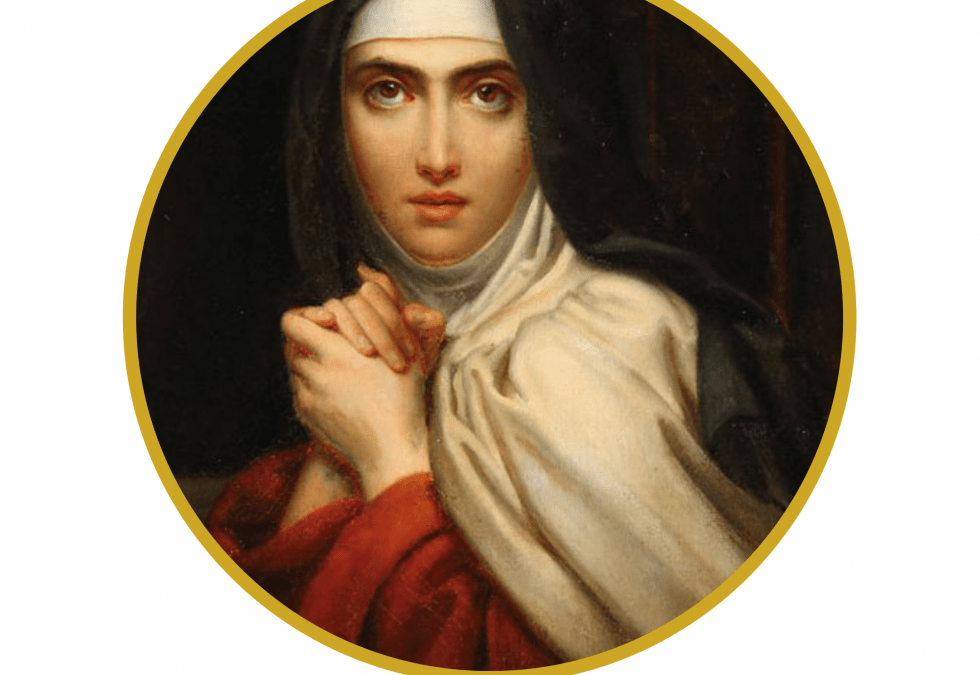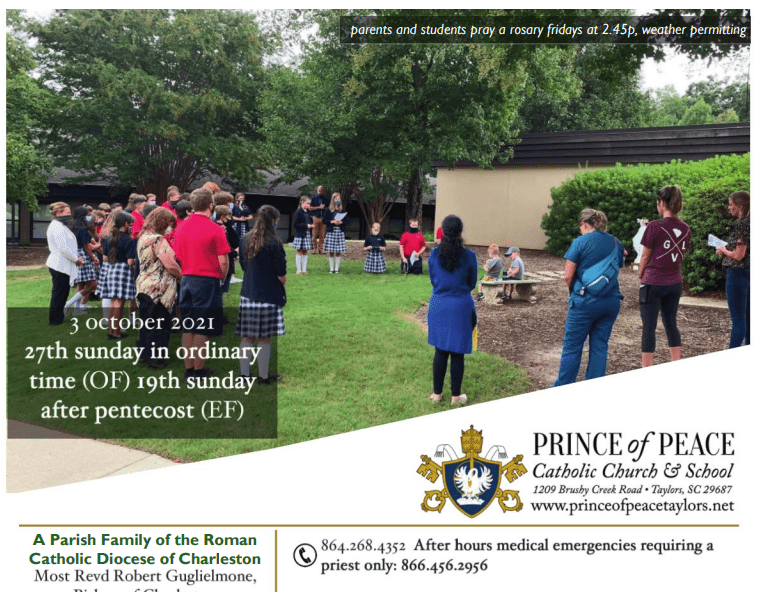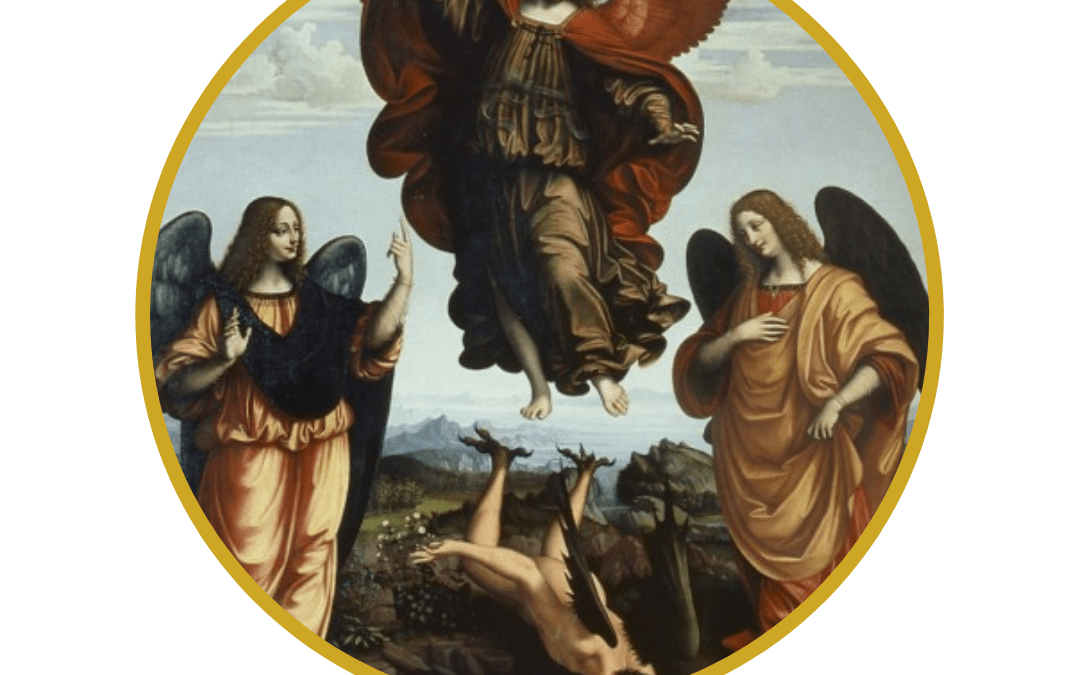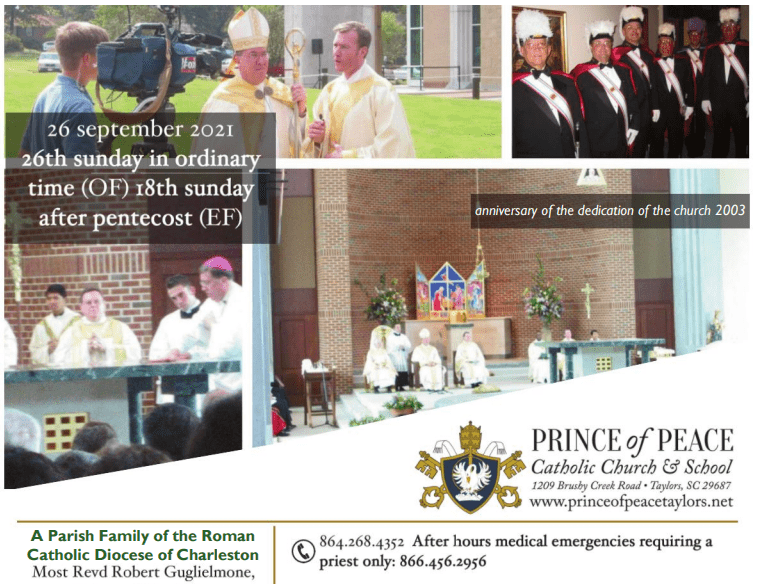
15 October: Feast of Saint Teresa of Jesus
15 October: Feast of Saint Teresa of Jesus. Also known as St. Teresa of Avila, she was born in the Spanish city of Avila in 1515. Her father was an ardent Catholic, with a collection of spiritual books of the type his daughter would later compose herself. As a child, Teresa felt captivated by the vision of God granted to the saints in heaven. She and her brother once ran away from home for the sake of dying as martyrs in a Muslim country, though a relative found them and promptly sent them back home. When Teresa was 14, her mother died, causing profound grief and prompting Teresa to embrace the Virgin Mary as her spiritual mother. After this, she struggled with a loss of her childhood zeal for God. Her father sent her to be educated in a convent of Augustinian nuns. Illness forced her to leave the convent. But the influence of a devout uncle, along with reading St. Jerome’s writings, convinced Teresa to then join the Carmelite Order at age 20. She again became seriously ill. She had severe pain and physical paralysis for two years, and afterwards remained in a painful debilitated state. For the next 20 years, she was an obedient Carmelite but struggled with physical pain and spiritual dryness. When she was nearly 40, Teresa was dramatically called to contemplative prayer. She experienced profound changes in her soul and received visions from God. During prayer, Teresa heard God speak and often became totally enraptured and even levitated. These graces reached a climax when her heart received a “transverberation” (piercing) – a mystical grace where a saint’s heart is pierced with a “dart of love” by an angel. Teresa played a significant role in the renewal of the Church that followed the Council of Trent. She proposed a return of the Carmelites to their original rule of life, a simple and austere form of monasticism (founded on silence and solitude) believed to date back to the prophet Elijah. Together with Saint John of the Cross, she founded the Order of Discalced Carmelites – “discalced,” meaning barefoot. She went on to found 30 monasteries. In 1582, Teresa’s health failed her for the last time and she died on October 15th. She was canonized in 1622. In 1970, Pope St. Paul VI proclaimed St. Teresa the first woman Doctor of the Church. She is called doctrix mystica, doctor of mystical theology. {Nine months after Teresa died, her body was exhumed and found incorrupt. Later, her heart was removed, enclosed in a crystal vessel and placed in a silver reliquary. While this was being done they beheld a glorious sight: a visible wound from the angel’s dart! It can still be seen today at the Carmelite Monastery of Alba de Tormes in Spain. Miraculously, her heart has kept its color and three sharp thorns in the heart are still visible today.}
“Let nothing affright thee, Nothing dismay thee. All is passing, God ever remains. Patience obtains all. Whoever possesses God Cannot lack anything. God alone suffices.” –St. Teresa of Avila
Ideas for celebrating this feast day at home:
- FORMED has several books and videos about St. Teresa of Avila: click here.
- Feast day food: make a Spanish recipe, such as Paella, Gazpacho, or Spanish omelet. Also, make Teresa’s Bread and St. Teresa’s Egg Yolks (Called yemas, candied egg yolks are a popular dessert in Avila.)
- Bake Carmel Apple Cookies: feasts of Teresa of Avila and Therese of Lisieux, Carmelite nuns, are in October (apple season). This cookie combines the seasonal harvest with caramel — a play on words with “Carmel”
- Read the Autobiography of St. Teresa. Her other books Interior Castleand Way of Perfection are more difficult and lofty to read, but are spiritual classics.
- For kids – Learn about “Who is St. Teresa of Avila?” using this activity from Loyola Press
- Read what Pope Benedict XVI writes about Saint Teresa of Avila, here.
- Study S Teresa’s Teaching on the Grades of Prayer and Read Demons According to St. Teresa and St. John of the Cross by Fr. Antonio Moreno.
- Pray the Litany of Saint Teresa of Jesus, The Glory of Spain

10 October 2021 Bulletin
Click to read this week’s bulletin: 10 October 2021

7 October: Feast of Our Lady of the Rosary
7 October: Feast of Our Lady of the Rosary. Known for centuries as the Feast of “Our Lady of Victory,” this day takes place in honor of a naval victory which secured European Christendom against Turkish invasion in 1571. Pope St. Pius V attributed the victory at Lepanto — one of the most decisive in all of naval history according to historians — to the intercession of the Blessed Virgin Mary through a campaign to pray the Rosary. The Muslim Ottoman Empire had been expanding into Europe for 900 years. By 1453, they took over Christian lands in the Byzantine Empire, and continued into the Mediterranean, threatening Rome. Pope Pius V called for prayer and action. He pleaded with every man, woman, and child to pray the Rosary. He also put together the Holy League: a coalition of Catholic powers which included Genoa, Spain, and the Papal States. Its fleets sailed to confront the Turks near the west coast of Greece on October 7, 1571. They were vastly outnumbered. The Pope, Christians throughout Europe, and crew members armed themselves with the Rosary in preparation for battle. Mass was said on all 200 ships. People prayed from dawn to dusk. Christians in Europe, encouraged by the Pope, gathered to invoke the Virgin Mary against the daunting Turkish forces. They kept churches open day and night so everyone could pray and ask for Mary’s help. The wind was against the Christians and the heavy iron rams (which ordinarily were used to ram and sink enemies) had been removed because over 18,000 Christian slaves were oarsmen in the galleys. The Holy Alliance chose to handicap themselves rather than sacrifice the slaves. As the battle commenced, everyone prayed. Some accounts say that Pope Pius V was granted a miraculous vision of the Holy League’s stunning victory at 4pm that day. The Pope understood the significance of the day’s events, when he was eventually informed that all but 13 of the nearly 300 Turkish ships had been captured or sunk. The victory was decisive and crushing. It marked a turning point in the history of Christianity and of Europe. Pope Pius V dedicated the day as one of thanksgiving to Our Lady of Victory. Pope Gregory XIII later changed the name to the Feast of Our Lady of the Rosary.
“It has always been the habit of Catholics in danger and in troublous times to fly for refuge to Mary. This devotion, so great and so confident, to the august Queen of Heaven, has never shone forth with such brilliancy as when the militant Church of God has seemed to be endangered by the violence of heresy … or by an intolerable moral corruption, or by the attacks of powerful enemies.” – Pope Leo XIII
Ideas for celebrating this feast day at home:
- Our Lady at Fatima said: “I am the Lady of the Rosary. Continue always to pray the Rosary every day.” Today, Pray the Rosary with your family. Keep it up throughout October, the month dedicated to the Rosary.
- Learn and memorize prayers to Mary, such as: Litany of Loreto, the Memorare, and Hail Holy Queen.
- Pope Leo XIII was devoted to Our Lady of the Rosary, producing 11 encyclicals on the subject of this feast and its importance. Read his and other papal encyclicals on the rosary at this link.
- Craft idea: Learn to make a rosary at home! Ideas here and here and here.
- Feast day treat: Since the origin of this feast came from the Christian fleet defeating the Turks at sea, why not make a cake in the shape of a ship? Look at this Pirate Ship Cake for ideas. Decorate your table in blue, in honor of the Blessed Mother. Another idea: Make a cupcake rosary (a “rosary” made out of cupcakes, mini cupcakes, or cookies). Idea here.
- Pius V was a holy Dominican, who wore his scratchy habit underneath his papal robes, and walked around Rome barefoot. He ate just to sustain himself, and fasted often. Follow his example and fast and pray the Rosary for the conversion of sinners and end to religious persecution around the world.

3 October 2021 Bulletin
Click to read this week’s bulletin: 3 October 2021
Changes since the bulletin was printed: daily Mass will be at St Rafka Maronite Church at 12n on Tuesday, Wednesday & Thursday. We hope to return to our own Church on Friday, 8 October at 12n for EF Mass. Also, the Children’s Holy Hour has been canceled

29 September: Feast of Saints Michael, Gabriel & Raphael, Archangels
29 September: Feast of Saints Michael, Gabriel & Raphael, Archangels. This feast, also known as “Michaelmas,” was a Holy Day of Obligation until the 18th century. The Catechism of the Catholic Church teaches that “The existence of the spiritual, non-corporeal beings that Sacred Scripture usually calls “angels” is a truth of faith. The witness of Scripture is as clear as the unanimity of Tradition.” Archangels are one of the nine choirs of angels listed in the Bible. (In ascending order, the choirs or classes are: Angels, Archangels, Principalities, Powers, Virtues, Dominations, Thrones, Cherubim, and Seraphim.) St. Michael’s name means “Who is like unto God?” and he is known as the Prince of the heavenly host. St. Michael’s task is doing battle against Satan and all his evil followers. His name appears in Scripture four times. He is usually depicted as a mighty warrior and is known as a champion of justice; the guardian of the Church; the protector and defender the friends of God. We invoke St. Michael for help in the fight against evil and to rescue souls from Satan, especially at the hour of death. St. Gabriel’s name means “God is my strength” and he appears as a messenger in the Bible three times (to the prophet Daniel; to Zachariah announcing the birth of John the Baptist; and to Mary at the Annunciation). St. Gabriel’s famous greeting to Mary at the Annunciation was Hail Mary, full of grace. St. Raphael’s name means “God has healed.” Knowledge of St. Raphael comes from the book of Tobit. His mission as healer and fellow traveler with Tobias has caused him to be invoked for journeys and at critical moments in life. Tradition also holds that Raphael is the angel that stirred the waters at the healing pool in Bethesda. Another angelic feast is celebrated this week on 2 October: Feast of the Guardian Angels. “From infancy to death human life is surrounded by their watchful care and protection. Beside each believer stands an angel as protector and shepherd leading him to life.” (Catechism of the Catholic Church, 336) St. Bernard wrote “…the angels are here; they are at your side, they are with you, present on your behalf. They are here to protect you and to serve you.” God has given each of us the incredible gift of a guardian angel – they will protect us and help us attain eternal salvation. “For he will give his angels charge of you to guard you in all your ways.” (Psalm 91:11)
Ideas for celebrating this feast day at home:
- Memorize the Prayer to St. Michael the Archangel. Pray it daily for protection from evil!
- In honor of St. Gabriel, Learn theAngelus. Traditionally, it is prayed at 6 and 12 o’clock
- Make recipes related to Michaelmas. Michael Bannock bread is traditionally served with roasted goose and carrots. Roasted chicken or Cornish hens work, too! (Easiest option is picking up a hot rotisserie chicken from the store!) Other ideas: angel food cake, devil’s food cake, angel hair pasta, or deviled eggs. For extra fun, poke cocktail swords (or little toy swords from play action figures) into your food! Decorate with white as symbolic of the angels.
- Do you have any angel-shaped Christmas cookie cutters? Use them to trace and color angels to decorate. OR, bake up some sugar cookies in angelic shapes.
- Folklore says Michaelmas is the last day that blackberries can be picked and eaten because when St. Michael expelled the devil from heaven, he fell from the skies and landed in a prickly blackberry bush. Satan cursed the fruit, stamped and spat on it, making it unfit for eating. So, on this feast day: enjoy blackberry wine or buy fresh blackberries to put on oatmeal, bake some into a pie or cobbler (recipe idea here), or top an angel food cake with blackberries.
- Saint Michael is the patron saint of police officers. This is the perfect day to stop by your local police station with thanks and treats. Tell them that it’s their feast day so you brought some food for feasting and you are praying for them.
- Don’t forget to memorize the Prayer to your Guardian Angel on October 2!

Bulletin: 26 September 2021
Click to read this week’s bulletin: 26 September 2021
- Note that daily Mass is at St Rafka Maronite Church on a different schedule presented on our calendar page.
- Note that the choir is currently not practicing due to COVID-19 concerns. It is expected they’ll resume 6/7 October.

23 September: Feast of Saint Pio of Pietrelcina
23 September: Feast of Saint Pio of Pietrelcina. Saint Pio is better known as “Padre Pio”. He was born Francesco Forgione in 1887, one of seven children in a simple peasant family. His growing up years were marked by daily Mass, family rosary, and acts of penance. He decided at a young age to dedicate his life to God. He joined the Capuchin Franciscan Friars at 15 years old. He was ordained a priest in 1910 and took the name Pio, a modern Italian form of “Pius,” in honor of Pope St. Pius V. He was assigned to the Friary in San Giovanni Rotondo in central Italy, where he lived the rest of his life. Padre Pio suffered from illnesses and health problems. He also experienced religious ecstasy and attacks from the devil (friars would report strange noises coming from his cell). He was reportedly able to bi-locate, levitate, and heal by touch. In 1918, while praying before a cross, Padre Pio received the painful Stigmata – the five wounds of Christ’s passion. He was the first stigmatized priest in Church history. The Stigmata would remain with him for 50 years. Many doctors looked at his wounds with no explanation. They openly bled with no drop in blood pressure. Doctors estimated that he lost a cup of blood every day. The wounds were deep, but free of inflammation and swelling. During World War I, Padre Pio served in the military and offered his own personal suffering for an end to war. In 1956 he founded the House for the Relief of Suffering, a hospital that serves 60,000 a year. Against his wishes, Padre Pio’s reputation for holiness and miracles began to attract crowds. Millions of people attended his Masses. He received letters from believers all over the world who asked for his saintly counsel and spiritual guidance. Countless were attracted to his confessional, where he would hear confessions for up to 16 hours a day. People waited as much as two weeks to have him hear their confession. Yet despite such notoriety, he would often say, “I only want to be a poor friar who prays.” His life was marked by long hours of prayer and sacrifice. He had a deep union with God, a burning love for the Holy Eucharist, and a fervent devotion to Our Blessed Mother. Worn out by years of intense suffering and constant apostolic activity, Padre Pio was called to his heavenly reward on September 23, 1968. He was canonized by Pope St. John Paul II in 2002. Today, his tomb is the most visited shrine in Europe, surpassing even Fatima and Lourdes.
Famous quotes from Padre Pio: “Today’s society does not pray. That is why it is falling apart.” – “Prayer is the best weapon we possess, the key that opens the heart of God.” – “Pray, hope and don’t worry. Worry is useless. Our Merciful Lord will listen to your prayer.”
Ideas for celebrating this feast day at home:
- Pray, hope and “donut” worry! Enjoy donuts as a feast day treat and remember this wise advice. Write out Padre Pio’s quote and put it on your wall as a daily reminder.
- Today’s menu should include Italian foods in honor of this Italian-born saint (pasta, risotto, pizza, etc). For dessert, make “Stigmata krispie treats”: use a hand-shaped cookie cutter (or your hand as a guide!) to cut out rice krispie treats. Put a dab of red icing in the center of the hand to look like a Stigmata.
- Padre Pio loved to hear confessions: his feast day is a great reminder for us! Put it on your calendar and make a commitment to go to confession.
- Watch a free video on FORMED about Saint Padre Pio: link here.
- Family prayer time: Padre Pio said “Prayer is the oxygen of the soul.” Today, kneel together as a family and pray. Make this a part of your daily routine. Padre Pio’s own family was known for praying a rosary together– try to add this to your family life, too!
(sources: catholicculture.org, Saint Pio of Pietrelcina by Capuchin Franciscan Friars, ncregister.com)

19 September 2021 Bulletin
Read this week’s bulletin: 19 September 2021

14 September: Feast of the Exaltation of the Holy Cross
14 September: Feast of the Exaltation of the Holy Cross. This feast commemorates three historical events: finding of the True Cross by Saint Helena; dedication of the churches on the site of the Holy Sepulchre and Mount Calvary; and restoration of the True Cross to Jerusalem by Heraclius II. After the Resurrection, Jewish and Roman authorities hid the Holy Sepulchre, Christ’s tomb. Earth was mounded up and pagan temples built on top. Tradition said Christ’s Cross had been hidden nearby. Saint Helena (Constantine’s mother) was divinely inspired to travel to Jerusalem in 326 to find the True Cross. Three crosses were eventually found. Helena and Saint Macarius, bishop of Jerusalem, devised an experiment to determine which was the True Cross. The crosses were taken to a woman near death; when she touched the True Cross, she was healed. Another tradition says the body of a dead man was laid upon each cross. The True Cross restored the man to life. Constantine constructed churches at the Holy Sepulchre and Mount Calvary. Those churches were dedicated and the Feast of the Exaltation of the Holy Cross was celebrated. The feast slowly spread, until, by the year 720, it was universal. In the 7th century, Persians conquered Jerusalem and captured the Cross. Heraclius II defeated them and restored the Cross to Jerusalem. Tradition says he carried the Cross on his own back, but when he attempted to enter the church on Mount Calvary, a strange force stopped him. Patriarch Zacharias of Jerusalem advised him to take off his royal robes and crown and to dress in penitential garb instead. As soon as Heraclius did so, he was able to carry the Cross into the church. Truly, this feast day is a celebration of God’s greatest work: His death and resurrection which defeated death and opened Heaven. Christ transformed an instrument of torture and humiliation into a symbol of salvation. When Moses lifted up the bronze serpent over the people, it was a foreshadowing of salvation through Jesus when He was lifted up on the Cross. To follow Christ we must take up His cross, follow Him and become obedient until death. We make the Sign of the Cross which helps to fix our minds and hearts on God. At Baptism, we are sealed with the Sign of the Cross, signifying our redemption and that we belong to Christ. Let us look to the cross frequently, and realize that when we make the Sign of the Cross we give our entire self to God — mind, soul, heart, and body. The antiphon for today says it perfectly: “We should glory in the cross of our Lord Jesus Christ, for he is our salvation, our life and our resurrection: through him we are saved and made free.”
Ideas for celebrating this feast day at home:
- Craft project: make and decorate a cross. Children could use popsicle sticks or twigs and twine. Adults could build a “yard cross” out of big pieces of lumber or tree limbs tied together.
- Place blessed crucifixes prominently throughout your home. Teach children to reverently make the sign of the cross.
- On this feast, eat red foods like strawberries and tomatoes, and drink red beverages like punch or red wine, reminding us of the blood Jesus shed on the cross. Eating white foods, like mozzarella cheese, reminds us of our baptism (when we were signed with the cross).
- Cook with sweet basil, which tradition says grew over the place where the True Cross was found. Use wooden skewers and make an appetizer of tomatoes, basil, and fresh mozzarella cheese. The wood of the skewers reminds us of the cross. Recipe idea here! Or, simply enjoy a dinner of spaghetti with tomato basil sauce and fresh parmesan.
- Make a dessert in the form of a cross, or decorated with a cross. Although usually made on Good Friday, hot cross buns would also be perfect for today (recipe here).
- Pray the Stations of the Cross. The prayer repeated at each station: We adore You, O Christ, and praise You, because by Your Holy Cross You have redeemed the world.
- Available on FORMED is a story about St. Helena and the True Cross: click here.
Recent Comments